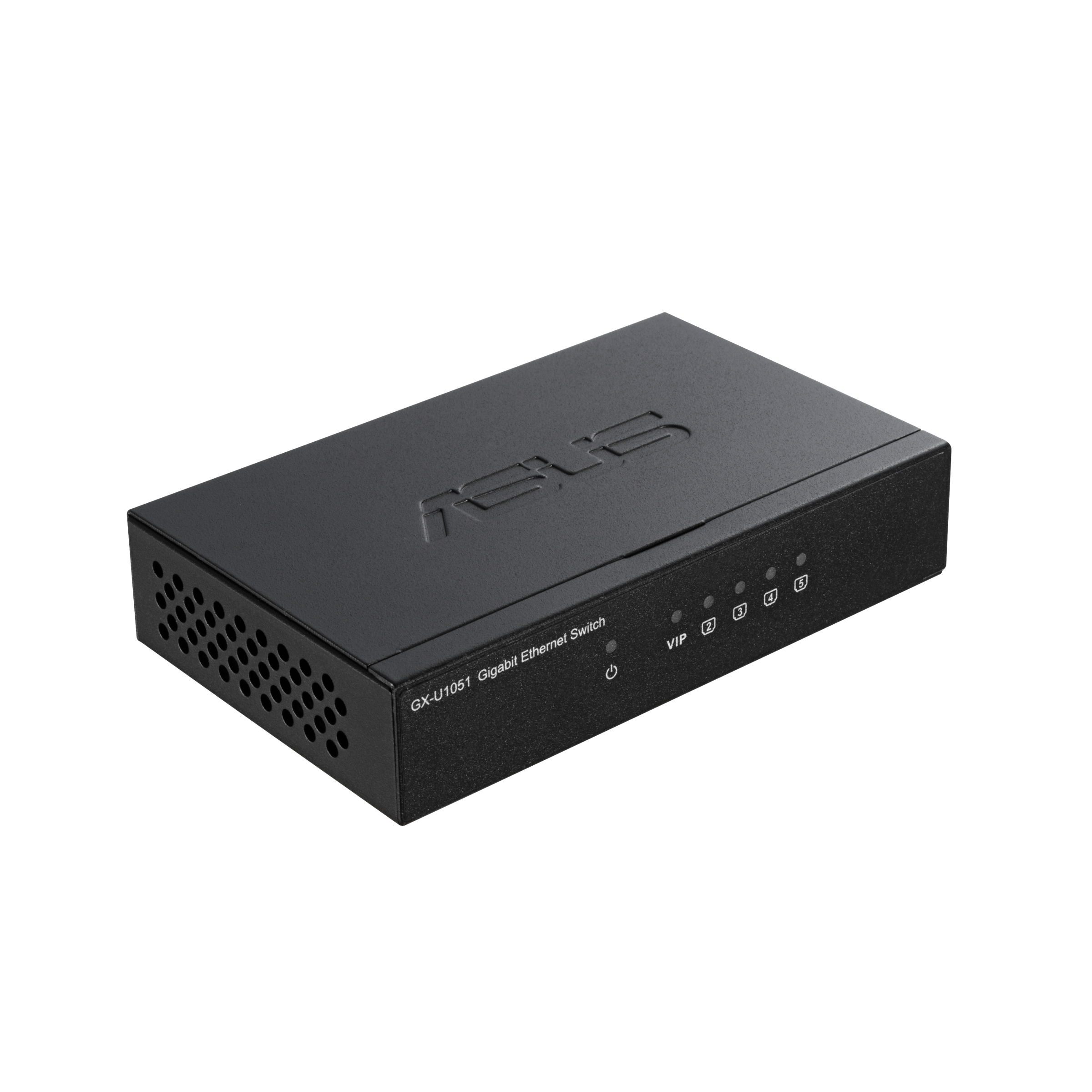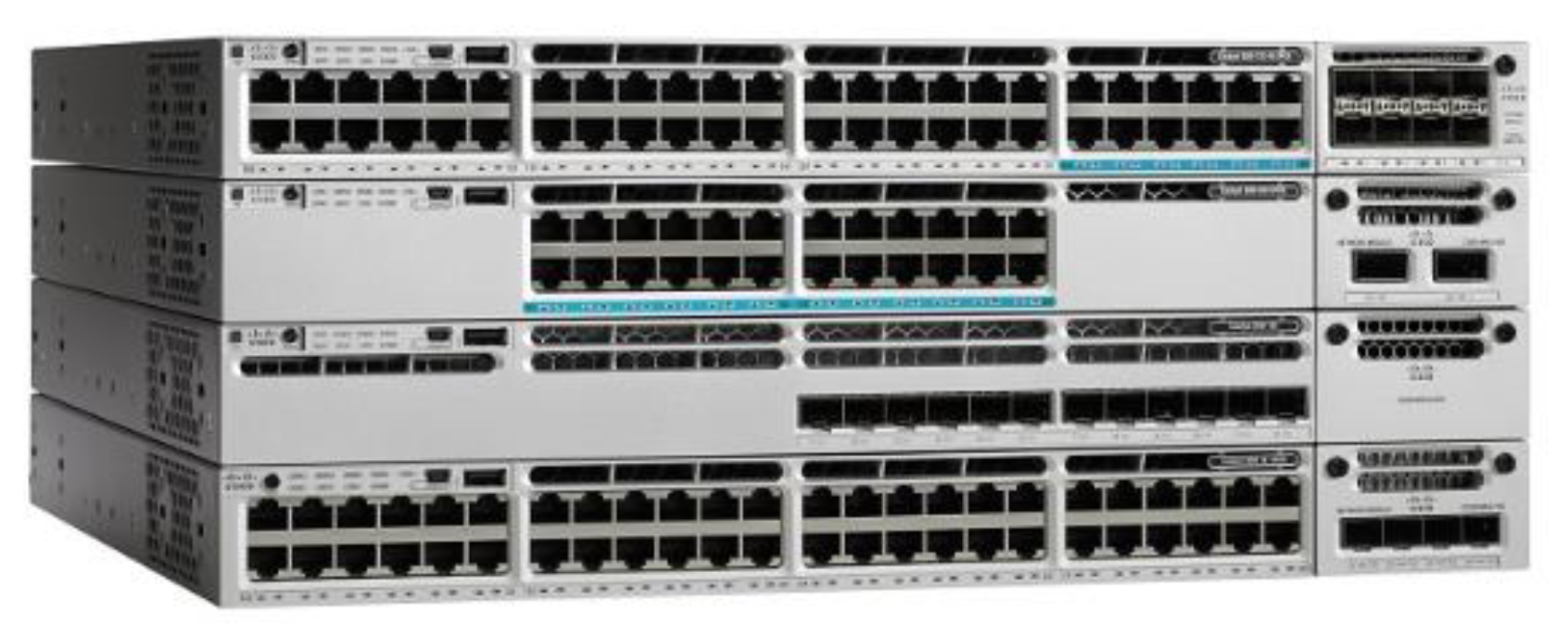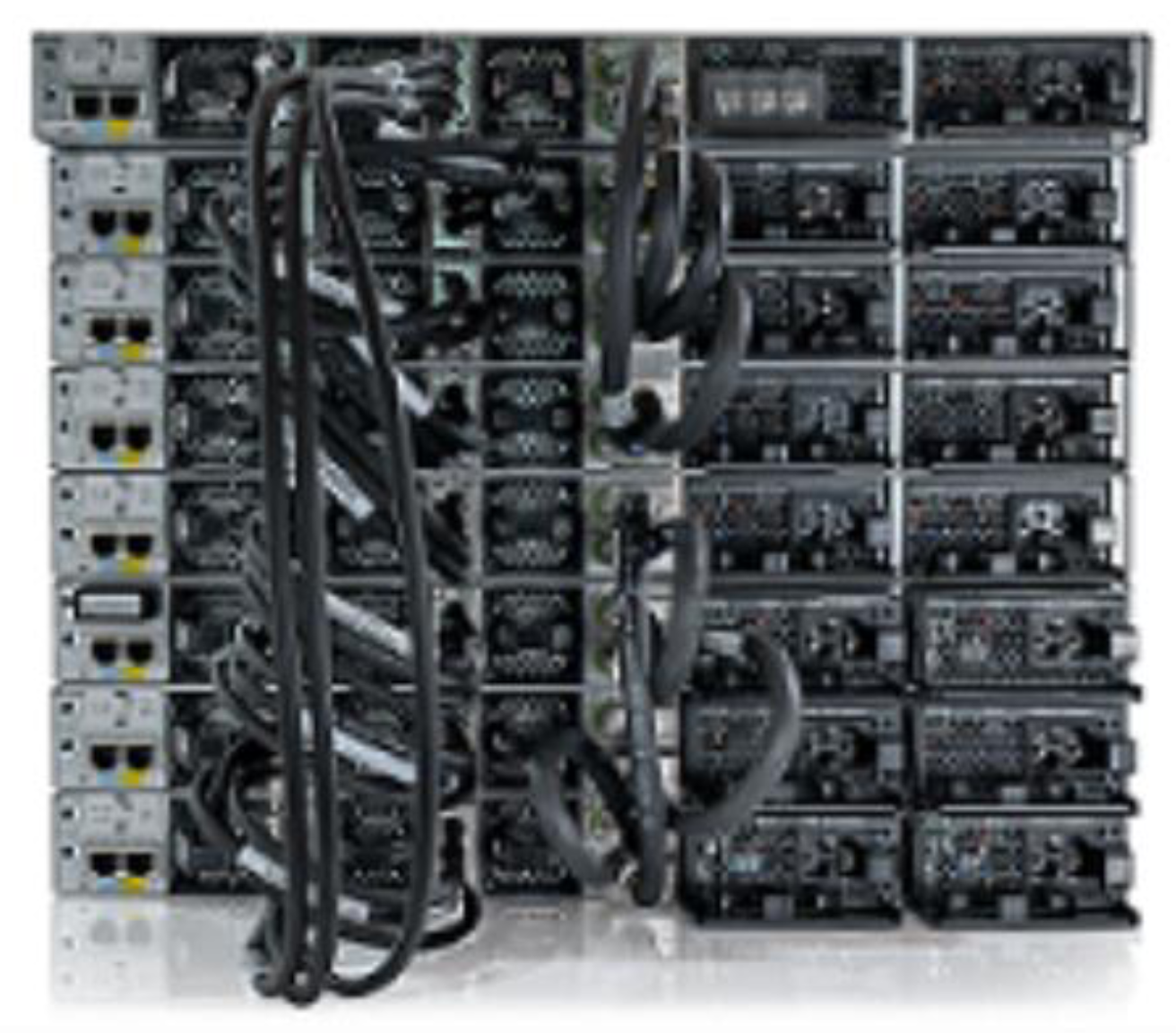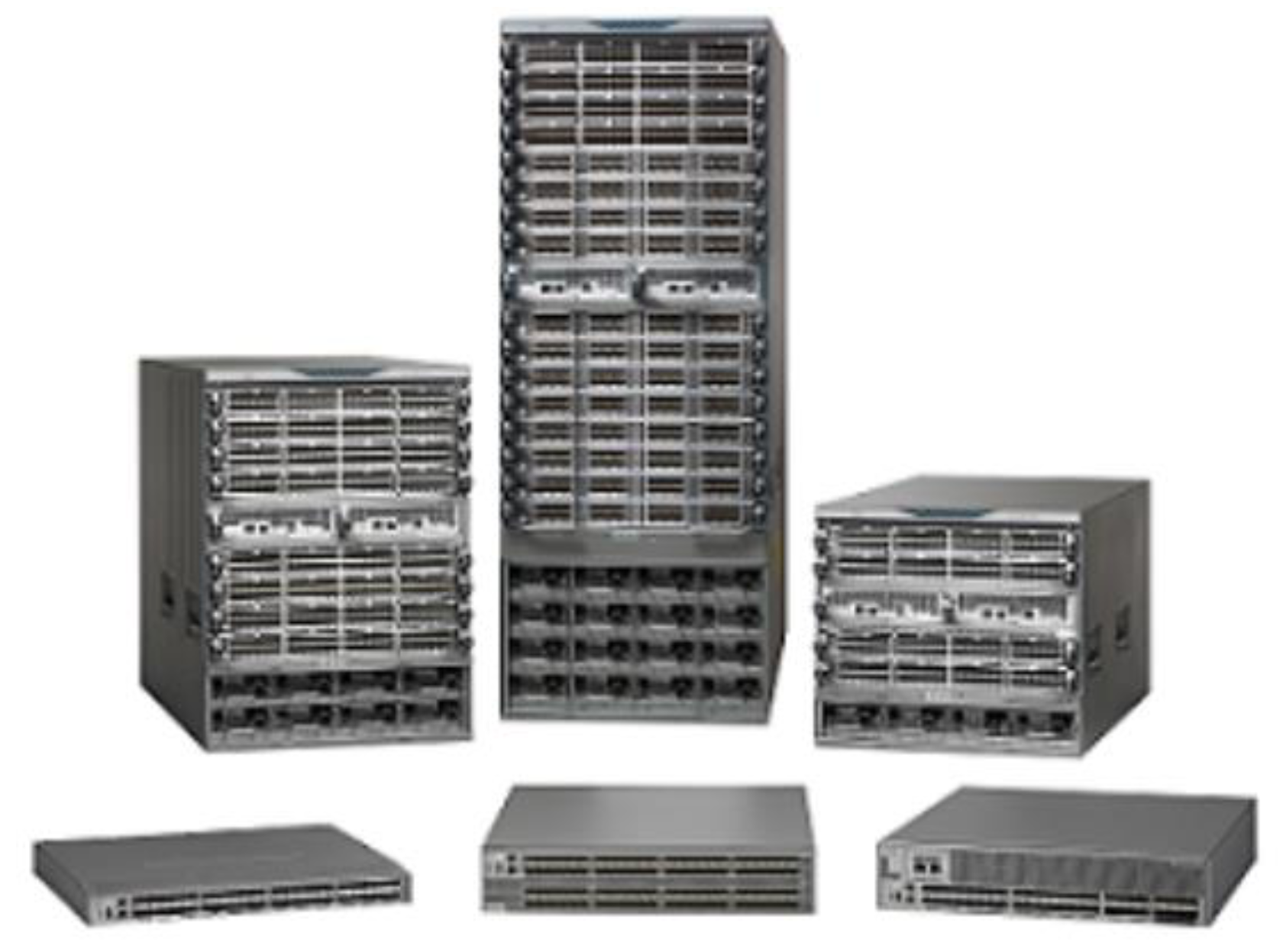
Table of Contents Link to heading
- Functions of Switches and Routers
- Switch Hardware
- Router Hardware
- Connectivity Options
Functions of Switches and Routers Link to heading
According to the OSI Layer Model:
- Switches move Ethernet frames from different nodes within a LAN (MAC addressing) - OSI Layer 2.
- Routers move IP packets across LANs and WANs (IP addressing) - OSI Layer 3.
Switch Hardware Link to heading
Switched and Routed Networks Link to heading
- Switching in a LAN is a Layer 2 (Data Link Layer) operation (on frames).
- Media Access Control (MAC) addressing is used.
- Compared to routing, this is a much simpler operation
- Carried out at the switch port level, via the ASICs – i.e. at the hardware level.
- Traditionally, this made switches significantly faster than routers, so networks were mainly switched networks.
- However, with today advances in router hardware, routers became much faster.
- Layer 3 switches improved matters significantly, as a switch was given routing capabilities.
- So now, the routing process has allowed design to move from switched networks to routed networks (At least at the Core and Distribution layers).
Switch Platforms Link to heading
- There is a variety of switch platforms, form factors, and other features that must be considered before choosing a switch.
- When designing a network, it is important to select the proper hardware to meet current network requirements, as well as to allow for network growth.
- Within an enterprise network, both switches and routers play a critical role in network communication.
Campus LAN Switches Link to heading
(Cisco 3850 series) - support high concentrations of user connections with the speed and security appropriate for the enterprise network.
Cisco Meraki Access Switches Link to heading
enable virtual stacking of switches. They monitor and configure thousands of switch ports over the web, without the intervention of on-site network administrators.
Cisco Nexus Platform Link to heading
promotes infrastructure scalability, operational continuity, and transport flexibility in the Data Center.
Service Provider Ethernet Access Switches Link to heading
feature application intelligence, unified services, virtualisation, integrated security, and simplified management.
Cisco Nexus Switch Platforms Link to heading
provide secure multi-tenant services by adding virtualisation intelligence technology to the data centre network.
Switch Form Factors Link to heading
very important in network design as it can promote great flexibility when a network grows.
Fixed Configuration Switches Link to heading
do not allow any change to hardware specifications - the number of Ethernet ports on switches and interface types on routers. Features and options are limited to those that originally come with the switch, which means that no additional changes can be made to the switch.

The only way to get more ports is to buy additional switches. Multiple switches can either be stand-alone (non-stackable) or stacked (stackable) to maximise scalability and optimise performance.
Stackable Switches Link to heading
daisy-chaining multiple switches one after the other (up to eight units in height), with the last switch in the stack connecting back to the first, creating a complete loop within the stack.
- Special cables are used to connect stackable switches that allow them to effectively operate as one large switch.
- One of the switches is the management switch for the whole stack.
- This switch utilises Cisco StackWise technology and is the visible presence of the stack on the network, so the stack is seen as a single switch.
- Fault tolerance and bandwidth availability are enhanced.
- The thickness of the switch, which is expressed in the number of rack
units, is also important for switches that are mounted in a rack.
- For example, the fixed configuration switches shown in the figure are all one rack unit (1U) or 1.75 inches (44.45 mm) in height.

Modular Switches Link to heading
have expansion slots of various types to allow the addition of extra expansion cards.
- The chasses on modular switches are expandable, as they accept field-replaceable line cards to increase the amount of ports.
- Same concept as PCIe slots on a PC motherboard.

Port Density Link to heading
refers to the number of ports available on a single switch.
- Fixed configuration switches support a variety of port density configurations.
- The Cisco Catalyst 3850 comes in 12, 24, 48 port configurations.
- Modular switches can support very high port densities through the addition of
multiple switchport line cards.
- The modular Catalyst 9400 switch supports 384 switchport interfaces.
Forwarding Rates Link to heading
define the processing capabilities of a switch by rating how much data the switch can process per second.
- Switch product lines are classified by forwarding rates.
- Entry-level switches have lower forwarding rates than enterprise-level switches.
- If switch forwarding rate is too low, it cannot accommodate full wire-speed
communication across all of its switch ports.
- Wire speed is the data rate that each Ethernet port on the switch is capable of attaining.
- Data rates can be 100 Mbps, 1 Gbps, 10 Gbps or 100 Gbps.
- Access layer switches typically do not need to operate at full wire speed, because they are physically limited by their uplinks to the Distribution layer.
Power over Ethernet (PoE) Link to heading
allows the switch to deliver power to a device (e.g., IP phone, Access Point, camera) over the existing Ethernet cabling.
- This is a convenient factor when choosing locations for APs as moving a mains-powered AP around would incur notable electrician’s fees for moving or installing new mains power points for the new location.
- However, a network administrator should ensure that the PoE features are actually required for a given installation because switches that support PoE are expensive.
- By using a power injector, we can add PoE capability to a non-PoE Ethernet switch. This can reduce expansion expenditure for such devices as new IP phones or Wireless Access Points.
- Benefits of PoE:
- PoE switches support remote management.
- PoE switches allow for centralised methods of backup power.
- PoE requires less configuration than a local power adaptor or injector.
- PoE leverages the data cabling infrastructure and no additional power cable is required, as is the case with power adaptors or injectors.
- PoE types and power levels:
| Type | IEEE Standard | Power to Device |
|---|---|---|
| PoE | IEEE 802.3af | 12.95W |
| PoE+ | IEEE 802.3at | 25.5W |
| PoE++ | IEEE 802.3bt (Type 3) | 51W |
| PoE++ | IEEE 802.3bt (Type 4) | 71.3W |
L3/Multilayer Switches Link to heading
typically deployed in the Core and Distribution layers of an organisation’s switched network.
- Support some routing protocols and forward IP packets at a rate close to that of L2 forwarding.
- Allow for a more available, scalable, and fault tolerant network through the use of First Hop Redundancy Protocols (FHRP).
- Support specialised hardware, such as Application-Specific Integrated
Circuits (ASICs).
- ASIC circuitry is installed at each switch port, thus removing the processing load from the switch’s CPU.
- ASICs, also have dedicated software data structures that can streamline the forwarding of IP packets independent of the CPU.
Business Considerations for Switch Selection Link to heading
When choosing a switch, select that offers the following criteria:
- Sufficient ports: Know how many ports you need for the network today, and consider how soon you will require additional ports.
- A mixture of UTP speeds: Consider how many ports will need 1-Gbps capability and how many ports only require 10/100-Mbps bandwidths.
- UTP and fiber ports: Consider carefully how many UTP ports will be needed and how many fiber ports will be needed.
| Consideration | Description |
|---|---|
| Cost | The cost of a switch will depend on the number and speed of the interfaces, supported features, and expansion capability |
| Port density | Network switches must support the appropriate number of devices on the network |
| Power | It is now common to power access points, IP phones, and compact switches user PoE. In addition to PoE considerations, some chassis-based switches support redundant power supplies |
| Reliability | The switch should provide continuous access to the network |
| Port speed | The speed of the network connection is of primary concern to end users |
| Frame buffers | The ability of the switch to store frames is important in a network where there may be congested ports to servers or other areas of the network |
| Scalability | The number of users on a network typically grows over time; therefore, the switch should provide the opportunity for growth |
Router Hardware Link to heading
- Routers use the network portion (prefix) of the destination IP address to
route packets to the proper destination.
- They select the best path – and find an alternative path if a link goes down.
- All hosts on a network specify the IP address of the local router interface as their Default Gateway.
- Running routing protocol software makes routers slower than switches.
- Routers also serve other beneficial functions:
- They provide broadcast containment by limiting broadcasts to the local network.
- They interconnect geographically separated locations.
- They group users logically by application or department within a company, who have command needs or require access to the same resources.
- They provide enhanced security by filtering unwanted traffic through Access Control Lists.
Routers Platforms Link to heading
Branch Routers Link to heading
optimise branch services on a single platform while delivering an optimal application experience across branch and WAN infrastructures (e.g. Cisco Integrated Services Router (ISR) 4000 Series Routers).
Network Edge Routers Link to heading
enable the Network Edge to deliver high-performance, highly secure and reliable services that unite campus, data centre, and branch networks (e.g. Cisco Aggregation Services Routers (ASR) 9000 Series Routers).
Service Provider Routers Link to heading
deliver end-to-end scalable solutions and subscriber-aware services (e.g. Cisco Network Convergence System (NCS) 6000 Series Routers).
Industrial Routers Link to heading
designed to provide enterprise-class features in rugged and harsh environments (e.g. Cisco 100 Series Industrial Integrated Services Routers).
Router Form Factors Link to heading
Cisco 900 Series Link to heading
a small branch office router.
It combines WAN, switching, security, and advanced connectivity options in a compact, fan-less platform, for small and medium-sized businesses.
Cisco ASR 9000 and 1000 Series Aggregation Services Routers Link to heading
provide density and resiliency with programmability, for a scalable network edge.
Cisco Network Convergence System 5500 Series Routers Link to heading
designed to efficiently scale between large data Centres and large enterprise networks, web, and service provider WAN and aggregation networks.
Cisco 800 Industrial Integrated Services Router Link to heading
compact and designed for harsh environments.
Connectivity Options Link to heading
- Whether to go with cables or wireless will depend on the physical environment being suitable for cable expansion or if employing wireless make it the more cost-effective option.
- The client’s required security levels may impose a veto on wireless; thus, so many factors may enter into making this decision.
Types of Cabling Link to heading
- Ethernet has been the success story of the last 50 years.
- Ethernet cabling as always been the most economic form of network cabling option.
- From a humble beginning of four Mbps, Ethernet has grown with the times.
- The Ethernet frame has remained fundamentally unchanged through various increases in speed: 10 Mbps, 100, 1000 to 10 Gbps, so compatibility has not been an issue.